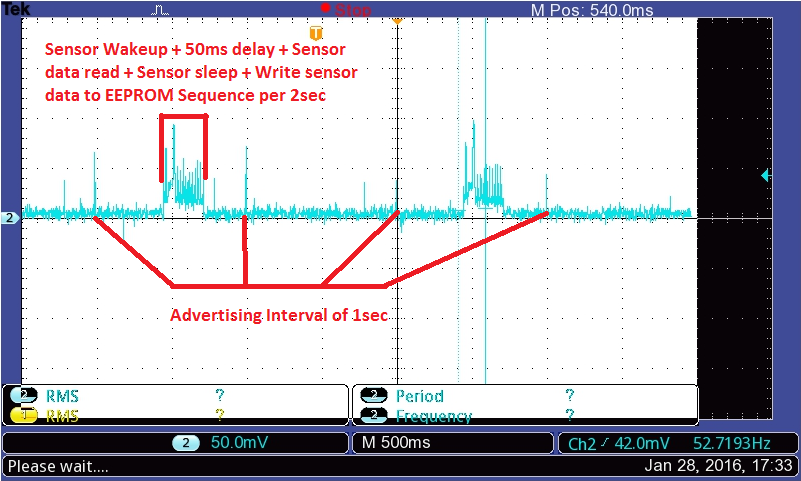Hi,
I am working on CC2650 SensorTag. I tried the SensorTag application. It worked fine.
For our application, we interfaced EEPROM device to it to log the movement sensor data. Now, in our application code, we have only movement sensor service and EEPROM read/write function added to it. The whole application is working fine. I just want to clear one thing which I didn't get.
When I observed the waveforms across the 10ohm resistor in the battery negative path to find out the battery power consumption, I observed that during advertising, the waveform on DSO show peaks during advertising event and EEPROM read/write events. But when it get connected to an iOS App, the waveform shows peaks at 30ms continuously and during EEPRO write event. So, I want to know what handshake take place during connection mode. Is it possible to change this time interval from 30ms to some other value? If yes, how?
Below are the screen shots taken during advertising and connected mode.



